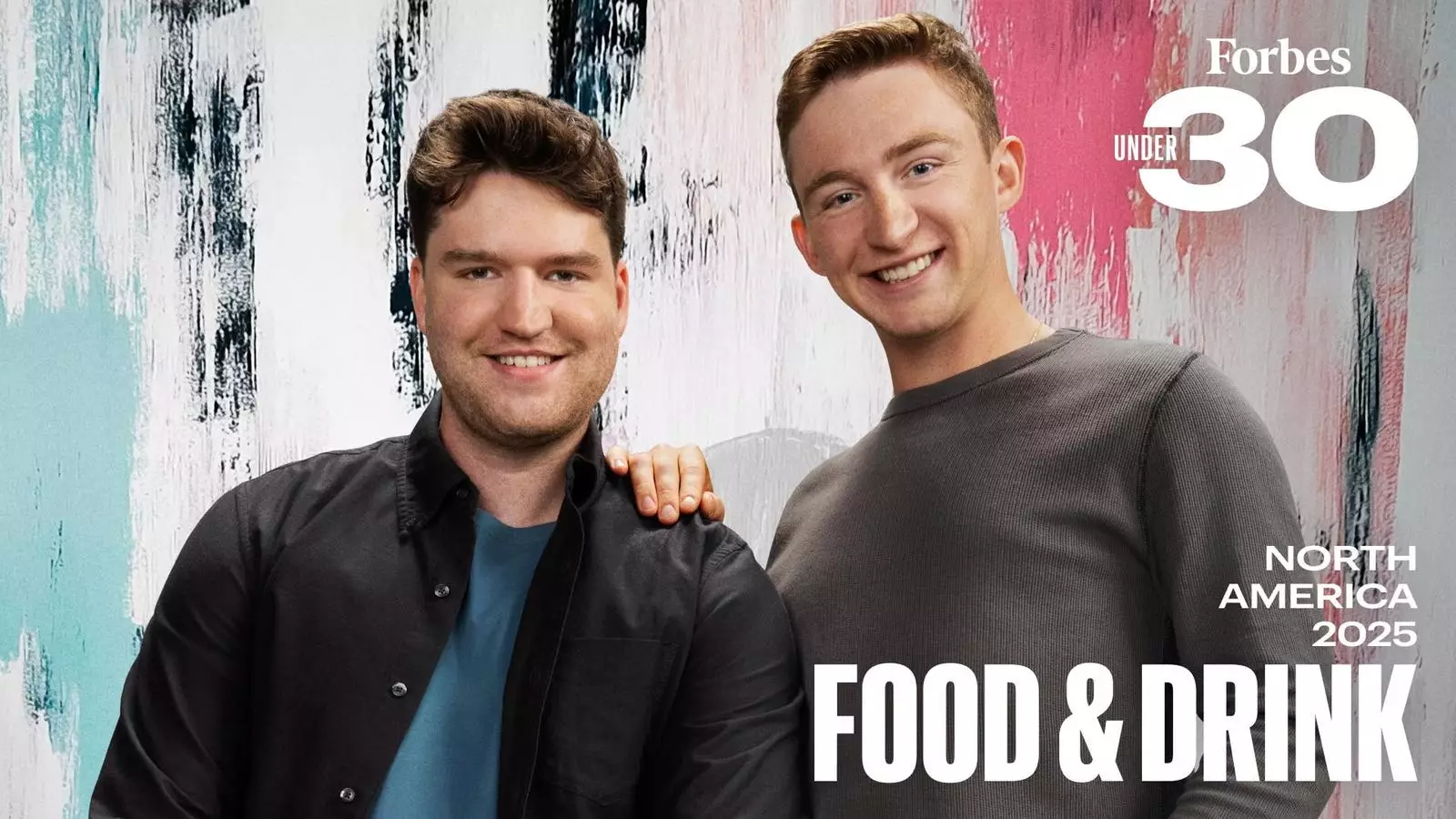As the year draws to a close, it seems as if time has swiftly flown by, leaving many of us in a state of wonder at how quickly the calendar pages have turned. For those immersed in the food and beverage industry, this particular time of year serves as both a moment of introspection and an opportunity for celebration. It is a chance to recognize the creativity and innovation that entrepreneurs and influencers bring to the table. Reflecting upon the strides made across this dynamic sector reveals an astounding array of talent and ingenuity, culminating in the excitement surrounding Forbes’ annual 30 Under 30 Food & Drink list.
This year marks the eighth installment of the list, which not only serves to herald upcoming innovators but also highlights the personal narratives that have shaped their journeys. Among the featured names are influencers and entrepreneurs alike, such as Meredith Hayden and Vasu Goyal, whose contributions signal a shift in consumer preferences and eating habits. This compilation speaks volumes about the evolving landscape of food and beverage, as it intertwines food culture with burgeoning business strategies that harness social media influence and community engagement.
Among the myriad of featured startups, the story of Brian Waddick and Cole Schaefer stands out. What started as a dorm-room experiment in seasoning sunflower seeds transformed into the wildly successful brand, Smackin’. With impressive revenue growth from $2 million last year to an anticipated $20 million this year, their journey exemplifies the power of grassroots marketing paired with strategic funding. Garnering $60,000 through state grants and angel investments, the duo not only capitalized on their campus buzz but has also successfully penetrated major retailers like Walmart and 7-Eleven.
Schaefer highlights the role of social media in their growth, boasting a follower base of over 700,000 Gen Z consumers. This demographic increasingly redefines what purchasing power looks like, prioritizing brands that resonate with their values and lifestyle. By converting online engagements into brick-and-mortar visibility, Waddick and Schaefer are at the forefront of a retail evolution that blends traditional shopping with digital engagement, and it’s a trend that is likely to continue well into 2025.
The dining landscape is also witnessing notable shifts, with a focus on experiential dining, particularly in Japanese cuisine. Casual dining experiences are becoming the norm, reflecting a collective desire for comfort in an ever-evolving world. As guests look for authenticity and unique encounters, new restaurants are skillfully blending the culinary art with the essence of cultural experiences.
However, the industry is not without its challenges. As workers push for better conditions and representation, the recent unionization efforts by Whole Foods employees in Philadelphia signal a shifting paradigm. The escalating influence of mega-corporations like Amazon complicates matters, raising questions about employee rights and the future of independent dining establishments.
Amid these changes, the question of sustainability continues to gain traction. The unfortunate reality of food waste remains a significant issue, especially evident post-Thanksgiving, when an estimated 300 million pounds of food are discarded in the United States. This statistic is alarming, yet it serves as a catalyst for individuals and businesses to rethink consumption habits.
In an effort to combat waste, creative solutions emerge, such as utilizing leftover turkey in a flavorful bake that combines unexpected ingredients. This not only minimizes waste but also demonstrates a growing consumer trend toward sustainability and resourcefulness. As more people become conscious of their environmental impact, the call for innovation in this arena becomes even more pressing.
Looking Ahead to 2025
As we look forward to 2025, the food and beverage sector is primed for transformation. From innovative startup successes to the integration of sustainable practices, the landscape is ever-evolving. The individuals making headlines today are surely paving the pathway for the culinary innovators of tomorrow. As resolutions take shape alongside new business ventures, the next year promises to be filled with opportunities, challenges, and, most importantly, a celebration of the diverse cultural tapestry that food provides.
The journey ahead is one that, while fraught with obstacles, is ripe with potential and inspiration. For those involved in the industry—be it entrepreneurs, writers, or consumers—the possibilities are both exciting and vast, beckoning us to engage, innovate, and reflect on our collective journey in the culinary world.

